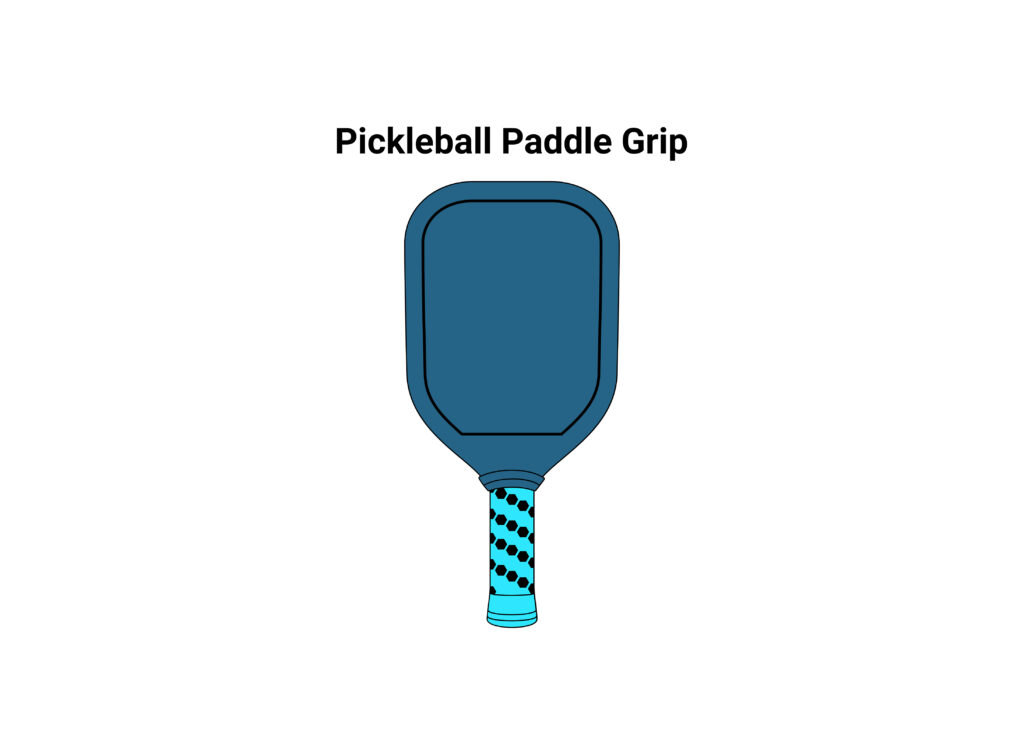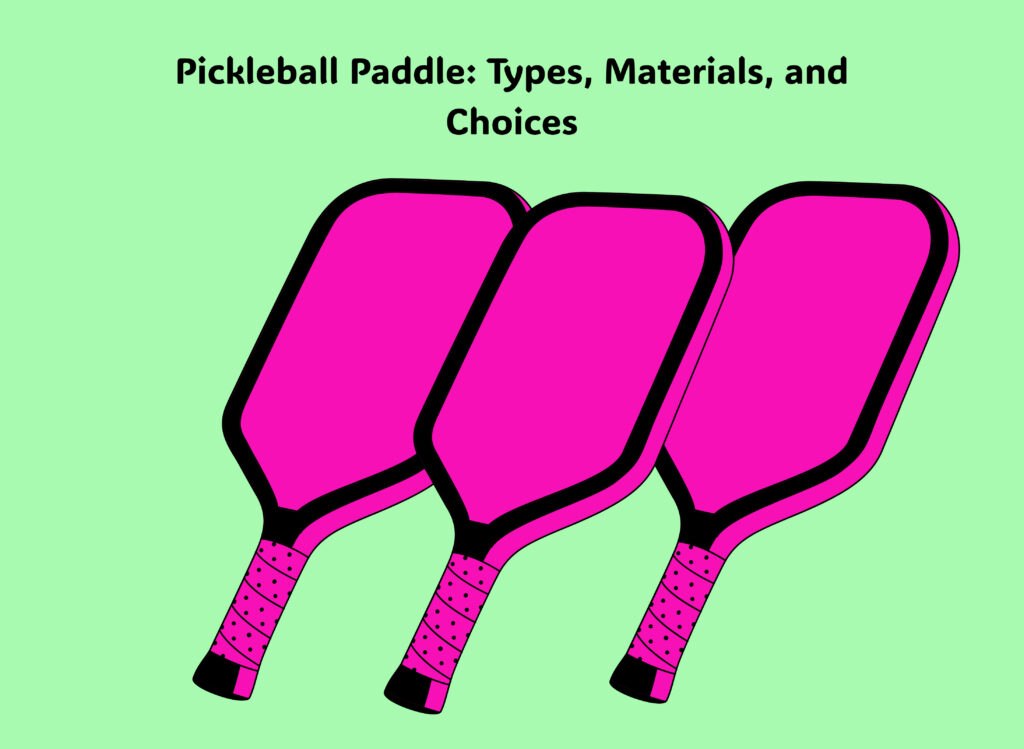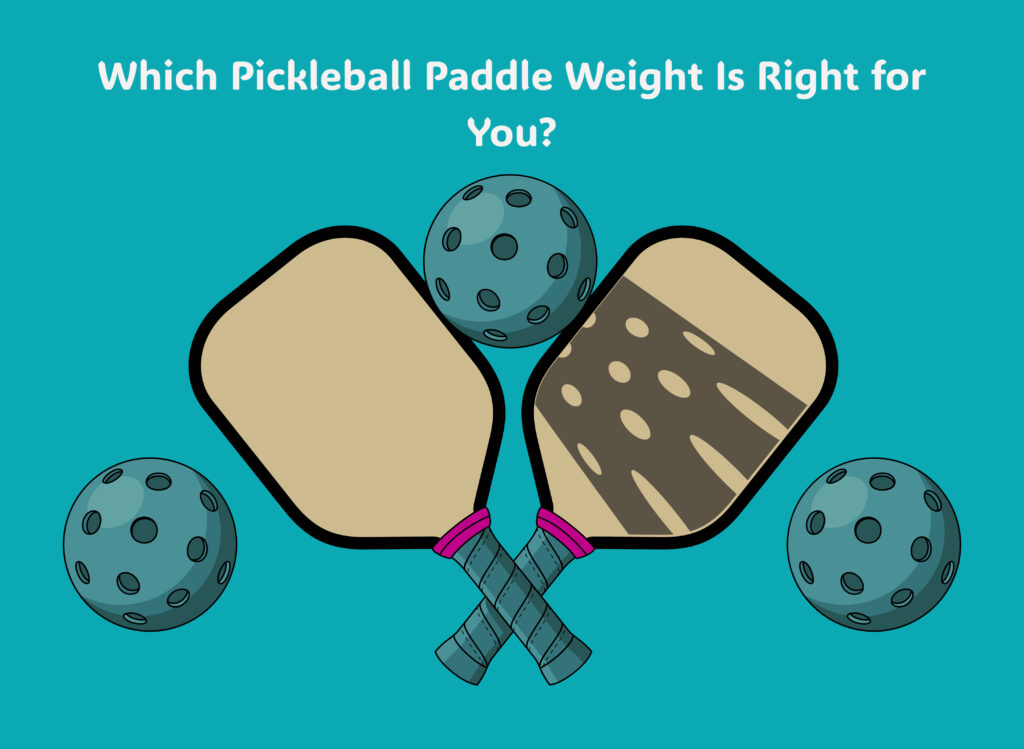- Pickleball Paddle Grip – The Foundation of Feel
- Overgrip – A Customisable Layer for Comfort and Control
- How Beginners Can Benefit from Understanding Grips and Overgrips
- Intermediate and Competitive Players: Fine-Tuning with Grip Choices
- Final Thoughts: Know Your Pickleball Paddle Grip, Own Your Game
What is the difference between Pickleball Paddle Grip and Overgrip? The Pickleball paddle grip (also known as the factory grip or base grip) is the layer that comes pre-installed on your paddle. An overgrip is a thin, soft, often replaceable wrap that goes over the top of the base grip.
Understanding the difference between a pickleball paddle grip and overgrip is especially important as you move from beginner to more serious play. In the UK, where players are regularly switching from shared paddles in club settings to owning their own gear, getting the grip right is a big step in improving comfort, preventing injuries, and levelling up performance.
While playing pickleball, there’s one element of equipment that’s in constant contact with you every second you’re on court: your paddle grip. It’s the foundation of control, comfort, and consistency. But when players talk about their “grip”, they’re often referring to two very different things—the main grip (handle grip) that comes with the paddle, and an overgrip, which is an additional layer wrapped over it. Both serve important purposes, but they’re not the same.
Let’s break down what each one is, how they differ, and how to know when (and why) to use them.
Pickleball Paddle Grip – The Foundation of Feel
The paddle grip (also known as the factory grip or base grip) is the layer that comes pre-installed on your paddle. It’s wrapped directly onto the paddle handle and is designed to offer a balance of comfort, tackiness, shock absorption, and sweat resistance. This is your core contact surface, and choosing the right one is essential.
What makes a good base grip?
✔ Tackiness – Helps you maintain hold without over-squeezing the paddle.
✔ Cushioning – Absorbs vibrations, reducing stress on wrists and elbows.
✔ Sweat management – Quality materials wick moisture, preventing slippage.
✔ Thickness and shape – Affects overall grip size, which in turn influences shot control and paddle feel.
Most pickleball paddles sold in the UK come with a standard grip size of 4” to 4.25”, which suits most players. Some players with smaller or larger hands may need to adjust this with an overgrip or replacement grip. If your hand feels cramped or your paddle feels like it’s twisting mid-shot, your grip might be too small or worn out.
🔥 Key takeaway: The main grip is the paddle’s permanent handle wrap—crucial for comfort, performance, and injury prevention.
Overgrip – A Customisable Layer for Comfort and Control
An overgrip is a thin, soft, often replaceable wrap that goes over the top of the base grip. It’s used to modify feel, add tackiness, increase grip size slightly, or absorb sweat during extended play. Overgrips are especially popular with players in the UK who train indoors—where sweat and humidity can affect paddle handling.
Why use an overgrip?
✔ Improved grip texture – Keeps the paddle stable even with sweaty hands.
✔ Customised thickness – Adds slight size for players who want more control or have larger hands.
✔ Shock absorption – Reduces vibration and fatigue over long matches.
✔ Economical – Instead of replacing the base grip, you can add or swap overgrips for a fresh feel.
✔ Style and personalisation – Available in various colours, materials, and patterns.
Overgrips wear out faster than base grips and are meant to be changed regularly. Many players switch them weekly or even daily during tournaments. In the UK, brands like Gamma, Tourna, and Yonex are popular choices, and they’re easily available from major retailers or online pickleball shops.
🔥 Key takeaway: Overgrips go on top of your paddle’s base grip and give players better feel, sweat control, and custom comfort—without changing the paddle permanently.
How Beginners Can Benefit from Understanding Grips and Overgrips
If you’re new to pickleball, grip talk might seem like a technical rabbit hole—but it matters more than you think. For beginners in the UK joining club sessions with loan paddles or budget gear, the grip is often overlooked. Yet many early frustrations—like paddle twist, discomfort, or sweaty hands—can be solved with a better grip or by adding an overgrip.
Grip advice for beginners:
✅ Check the grip size – If your fingers wrap too far around or don’t meet your palm, the size may be off.
✅ Try an overgrip – Inexpensive and easy to apply, it can make any paddle feel more comfortable and secure.
✅ Replace worn grips – A slick or torn grip makes playing harder and less enjoyable.
✅ Focus on comfort and control, not aesthetics or brand hype.
Many beginner paddles in the UK market come with basic grips that wear quickly. Adding a high-quality overgrip can dramatically improve feel, giving you more control and preventing over-gripping—one of the key causes of elbow pain and poor technique.
🔥 Key takeaway: Beginners can instantly improve feel, comfort, and paddle control by using an overgrip—even on starter paddles.
Intermediate and Competitive Players: Fine-Tuning with Grip Choices
Once you’re playing regularly, competing in leagues, or training for tournaments, your grip setup becomes more about personalisation and fine-tuning. At this stage, players may swap factory grips for thinner or thicker replacements, add multiple overgrips, or even rotate grip styles depending on playing conditions.
Advanced grip habits:
✔ Switching overgrips based on humidity or court type – Indoor vs outdoor, sweaty vs dry conditions.
✔ Changing overgrips between matches – Fresh tackiness gives you consistent hold.
✔ Layering multiple overgrips – To increase handle size without changing the base grip.
✔ Replacing base grips with performance options – Such as perforated leather, contoured, or moisture-wicking grips.
✔ Colour coding or custom wraps – For a psychological edge and personal flair.
In the UK, where indoor courts can vary in temperature and humidity, having grip options in your kit bag is a smart move. Players often travel with a roll of overgrip tape, scissors, and grip powder to adjust on the fly during events. Your grip might be the difference between winning and mishitting under pressure.
🔥 Key takeaway: Intermediate and advanced players use grip and overgrip choices to customise feel, manage sweat, and maintain precision in every shot.
Final Thoughts: Know Your Pickleball Paddle Grip, Own Your Game
Understanding the difference between pickleball grip and overgrip is more than a gear tip—it’s a performance decision. Whether you’re picking up a paddle for the first time or stepping into your fifth UK tournament this year, your connection to the paddle starts with the grip. It affects every shot, every swing, and every moment on court.
Key Takeaways:
✔ The paddle grip is the permanent base layer—it impacts comfort, feel, and control.
✔ The overgrip is a temporary layer wrapped over the grip to modify size, texture, or moisture absorption.
✔ Beginners benefit from experimenting with overgrips to improve comfort and reduce hand fatigue.
✔ Advanced players use grip setups strategically to manage performance under various conditions.
✔ Grips wear down—don’t wait until they’re slick to change them.
👀 Enjoyed this read? Fancy levelling up your game even more? Keep reading Dink Quest for the best pickleball tips, drills, and news in the UK!
🎯 Check out these popular posts next:
📬 Subscribe to the Dink Quest newsletter to Stay in the Loop and be the first to get new blog posts, UK pickleball news, tips, player spotlights and exclusive offers
👉 Click here to subscribe now
Get discounts and exclusive offers for Paddles, clothing and accessories from our shop
We’ve got plenty more where that came from! Whether you’re working on your third shot drop, curious about dinking strategies, or just figuring out how to hold your paddle without it flying across the court we’ve got you covered.
👉 Keep reading, keep learning, and keep dinking smart. Let’s grow the game together, one dink at a time. 💚
See you on the court!
The Dinkquest Team UK 🏓



